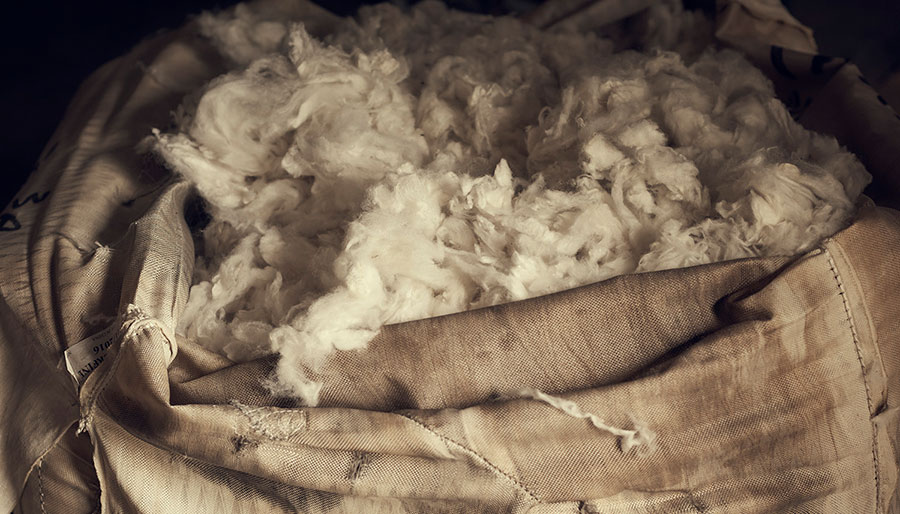Hell yeah! The next time somebody suggests that knitting your next jumper isn't sustainable unless it's made with organic recycled hemp yarn produced less than 50 miles from your home, consider these facts:
1. One person making their own clothes cannot possibly produce the same impact as a factory producing fast fashion on a daily basis.
It's not possible, even if you do really love crochet, knitting and sewing. You dedicating 6 hours a week to sewing up a new blouse will never have the same environmental impact as buying 6 new blouses off the high street rail every month.
Stocking up on every new fabric design that comes out is another matter though...
2. Making your own clothes influences your shopping habits.
If you know how much time, effort and materials it takes to make a wearable garment, the chances are that you think about how mass produced clothing doesn't pay. People work all day and night for a meagre wage to make those clothes and not all of us are comfortable knowing that fact.
You could also find that you love making your own clothes and simply buying them doesn't do it for you any more.
With some time to kill that day, I wore my me-made outfit as I wandered around a few vintage shops looking for inspiration, and it struck me that I had absolutely no desire to buy anything. -Sophie Benson, Vogue.
It's easy to be more sustainable if you're actually enjoying it, isn't it?
Your shopping habits could also change because once you start learning how to tailor garments to suit your unique body, buying a 'fits all' garment might just not fit or look as good as it used to.
You may find that the mindfulness and the dopamine hit you get from crafting replaces any thrill you got from walking out of the shopping centre with bags of new clothes.
Also, it is worth pointing out that the DIY option is not cheap when compared to the mass produced option. This slows everything down and before you know it, you have something that has taken time and effort (and your hobby cash) so there's no way you could possibly match your consumption to previous amounts! Make it all count. You're making slow fashion, not matching fast fashion. One dress that you made yourself will last longer and be worth more than the 10 fast fashion dresses you bought on sale that fell apart after 2 wears.
3. You're actually trying. Never forget that.
I have noticed, especially on sites such as Twitter, this polarisation of what sustainability is. People will often dismiss the efforts of others as not "truly" sustainable based on their own individual lofty standards. Also, if anyone starts telling you what to do and uses the word "truly" just block them. I don't know why belittling the efforts of others gives them such a kick but it does. Do not give them the satisfaction.
The fact that you are even thinking about being more sustainable is huge. Do you think everyone in the early 90s stopped and thought "this is bad for the planet so I shouldn't do it"? Of course they didn't. The 'make do and mend' era had well and truly ended by the 90s and we're only just starting to grapple with the existential crisis that is the poisoning of the planet.
You think about how you can be more sustainable. You know that even the little things count. If all of us made one small change today, we would collectively make a huge impact. Never forget that.
You do not have to do anything extreme in order to be more sustainable. Little things make a big difference. You alone can make a difference.
Perspective check: You can't do it all.
I wouldn't expect anybody to make absolutely everything themselves. I certainly can't. The rate that my children go through underwear and shoes means I can't possibly make and mend to keep up with that. I try to be realistic. I don't just buy clothes for the hell of it. If I need new jeans, I will have that one pair of jeans until they fall apart (usually at the crotch) and then I'll either use the fabric myself, give it to an enthusiastic sewist or recycle it. That, for me, is trying to be sustainable in a way that is achievable for me. If I tried to live up to the expectations of others, I would fail. Why would you want to persevere with anything that makes you feel like a failure every day?
Do not let the high standards of others ever make you feel like you aren't doing your bit. We can't all be hardcore off-grid vegans and we don't all have the budget for buying the best, most eco friendly of craft materials. We can only work within our means.
4. If you do use animal fibres or materials, you can still be sustainable.

Using wool is sustainable.
According to Woolmark.com, wool is the most reused and recycled fibre in the world. It's also renewable and biodegradable. It's a sound choice for most people who can have it near their skin.
But what about Mulesing?
A common response I come across when I talk about using wool is "wool is cruel because of mulesing" and this is always something I have to challenge because while it is true that it is a cruel practice, it only currently happens in Australia.
While this doesn't seem like much, Australian wool does make up 25% of all wool produced so do check where your wool is coming from and whether those particular producers allow mulesing or not.
Mulesing is illegal in most countries, including those that make up the European Union and the UK. If you know where your wool comes from and how it is produced (most manufacturers are happy to tell you) you can rest assured that wool is good.
What other animal based materials are sustainable?
Other natural materials (to name just some) from animals include silk, cashmere, alpaca and leather.
Leather, as one of the many everyday items that we use, is durable, long lasting, and can be passed down through generations.-Oeko Tex
I have witnessed plenty of "it's not sustainable to use animal products" arguments on social media and while it's true that consuming too much red meat is responsible for higher livestock emissions globally, the issue of consuming animal product is not as black and white as people would have you believe.
We have to also consider what the alternatives are and how they are produced. Take for example, leather.
“Vegan leather can be made from plastics which take years to biodegrade, so it’s actually worse for the planet than regular.”- Jourdan Norcose of Boyish Jeans
We have to be careful as consumers when it comes to using leather. What is being called 'vegan leather' is it coming from plants or plastic? It matters!
It's not a black and white issue. We can't just dismiss all animal leather as bad and all artificial leather as good. We also need to know where it comes from and how it is made. People will be quick to judge and tell you that the animal based leather that you are using isn't sustainable but that's not strictly true.
As with any sourcing of materials, have a look at the ethics behind production too. Make informed decisions and you'll be confident in your creations.

5. Yarn doesn't have to be plant or animal based to be sustainable.
When it comes to knitting and crochet there is a lot of talk about sustainability. As I have previously highlighted, the binary attitudes on social media would sometimes have you believe that all acrylic yarn is bad, no matter how much or how little you use.
How much of it are you actually using? For a garment, you might use 4-8 100g balls of acrylic yarn. Is it really that bad?
Perspective check: You're making one garment.
It is estimated that 45 million Americans have an interest in knitting or crochet (or both). That's 13% of the US population. 88% of the US population are consumers of fast fashion. Not so bad when you put it into perspective, is it?
If you do really love using synthetic fibres but want to be more sustainable, there are plenty of recycled synthetic yarns out there on the craft market but don't feel bad about loving acrylic yarns. You're making something meaningful with it, not just consuming it and throwing it away the following month.
6. Making, in itself, is sustainable.
It is currently estimated that in the UK:
10,000 items of clothing being sent to landfill every five minutes, equivalent to £140 million in value every year- Keep Britain Tidy
This stings for several reasons but it's a hard hitting reminder that making is not wasting. Whether you have added a crochet collar to a pre-loved top or made the entire cardigan yourself, you are making and that is sustainable.
I do recommend reading the rest of that article to see just how much of a difference you are making by slowing down your clothing consumption, personalising your wardrobe, adding some handmade elements, upcycling, mending and making as an everyday thing. What you are doing is amazing and it will make a difference to that number above that is hard to imagine.
Whether you knit, crochet, sew or just dabble in upcycling, you are doing something sustainable. Go you!
Read the articles:
Why I'm making all my clothes for a year instead of buying anything new.
The slow down on fast fashion- Keep Britain Tidy
Sustainable leather and why it's important.
Is vegan leather worse for the environment than real leather?
Sustainability and performance in textiles: Can you have it all?
Other sources
Australian Department for Agriculture, Fisheries and Forestry.
If you'd like to get inspired to create a DIY wardrobe, here are some useful links:

